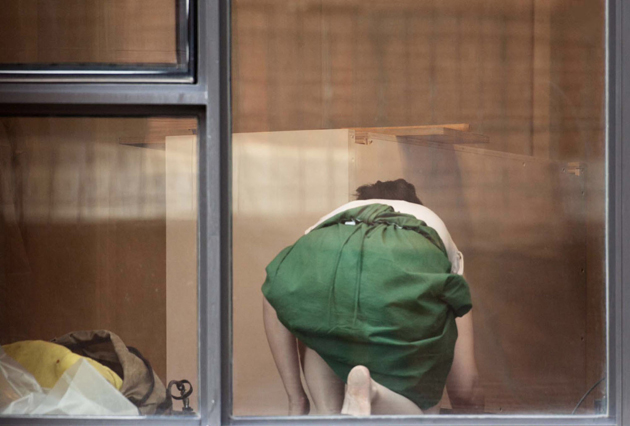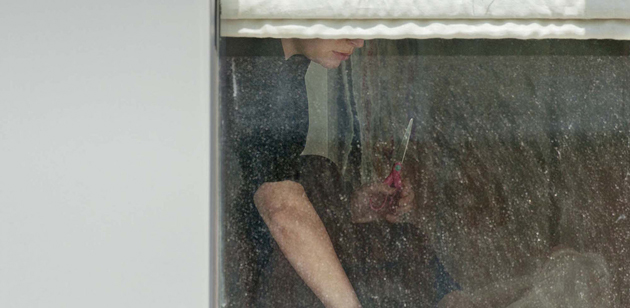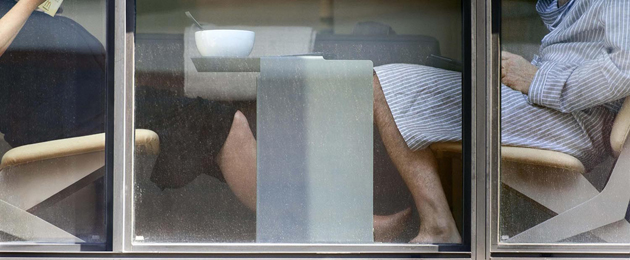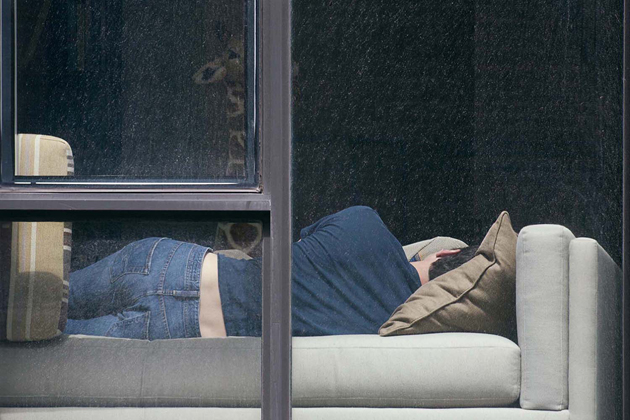In Rear Window, Jimmy Stewart’s character L.B. Jefferies starts spying on his neighbors after breaking his leg and ending up confined to a wheelchair in his cramped Greenwich Village apartment. Jefferies can’t help it, he’s an adventurous travel photographer, but his curiosity gets him into all sorts of trouble: he sees a man’s wife disappear, a dog get its neck broken, jeopardizes his girlfriend’s (Grace Kelly’s!) safety on multiple occasions. One neighbor nearly kills him.

New York photographer Arne Svenson shares a certain affinity with Jefferies, only his obsessions are real. “The Neighbors”, his new exhibit at Julie Saul Gallery on West 22nd Street, is made up of photos Svenson took of people living in the Zinc Building, the glitzy glass tower that sits across from his apartment in Tribeca. The people in the photos had no idea and stand to make no money off of the photos, which are fetching up to $7,500 a pop. Some are disturbed, others are furious. Most are curious to see if their bodies made it into the exhibit.

Like Jefferies, Svenson stumbled into voyeurism by accident: A birdwatching friend died and left him with a CT-501 500-mm Nikon telephoto lens. Svenson didn’t have much interest in birds, nor did he like the idea of leaving his apartment — most of his other photo work happens in his home studio. But, as he told The New Yorker’s Raffi Khatchadourian, he wanted to learn how to use the camera, and so turned his attention to the window. Obsession ensued. He stopped going out, preferring to wait for his subjects to come home and open their curtains. “New Yorkers are masters of being both the observer and the observed,” Svenson recently told Slate. “We live so densely packed together that contact is inevitable — even our homes are stacked facing each other. I have found this symbiotic relationship between the looker and the observed only here — we understand that privacy is fluid and that glass truly is transparent.”

Of course, not everyone agrees, particularly the tenants at Zinc Building. The legalities are murky, and Svenson’s gallery photos are anything but offensive — no faces, no nudes, little hint of identity — but many are disturbed by the process Svenson used. After all, he likely has thousands of photos of people will never see, of people doing things they thought were being done in private.
For Svenson, the rush of watching people who don’t know they’re being watched seems to be the point. A problem? Probably. Indicative of the direction our society is heading? Sure. Voyeuristic art isn’t anything new. Talking about Jefferies, Svenson told Khatchadourian, “He sits and he waits. I feel a certain camaraderie with that.”


